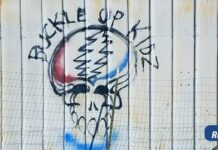Sacramento, Calif. – In one of the most complex transplant surgeries ever performed, an international team of surgeons at UC Davis Medical Center has restored the voice of a California woman who had been unable to speak for more than a decade.
The surgical team announced today that they replaced the larynx (voicebox), thyroid gland and trachea (windpipe) in a 52-year-old Modesto, California, woman who had lost her ability to speak and breathe on her own. The 18-hour operation, which took place over a two-day period in October 2010, is only the second documented case of its kind in the world. Just 13 days after the operation, the patient voiced her first words in 11 years and is now able to speak easily and at length.
On Jan. 20, when she meets in Sacramento with her entire surgical team for the first time since the transplant, patient Brenda Charett Jensen will be able to speak for herself about the remarkable surgery and what it has meant to her, and to her family and friends.
“This operation has restored my life,” said Jensen, who was raised in the San Joaquin Valley town of Patterson, Calif. “I feel so blessed to have been given this opportunity. It is a miracle. I’m talking, talking, talking, which just amazes my family and friends. I am deeply grateful to the donor and to the donor family for making this gift possible for me.”
The only other documented larynx transplant took place at the Cleveland Clinic in 1998. For the physicians in the UC Davis case, the novel procedure has advanced knowledge in the field of transplant medicine and otolaryngology.
“We are absolutely delighted with the results of this extraordinary case,” said Gregory Farwell, associate professor of otolaryngology at UC Davis and lead surgeon for the transplant. “The larynx is an incredibly complex organ, with intricate nerves and muscles functioning to provide voice and allow breathing. Our success required that we assemble an exceptional, multi-disciplinary team, use the most recent advances in surgical and rehabilitation techniques, and find a patient who would relish the daunting challenges of undergoing the transplant and the work necessary to use her new voicebox.”
Prior to the transplant, Jensen was unable to speak or breathe normally because of complications stemming from a previous surgery several years ago that closed off her airway and made her completely dependent on a tracheotomy tube. For more than a decade, she has been limited to vocalizing words using a handheld electronic device that produces an artificial, robot-like sound. In order to breathe, she has relied on the tracheotomy, which is still in place and visible at the base of her neck.
Jensen’s 18-hour procedure was followed by two months of rehabilitation. Her newly restored voice, while sounding hoarse at times, has improved significantly since the transplant as her nerves regenerate and she learns again how to speak. While the donor organ came from an accident victim, Jensen’s voice is her own and not that of the female donor. The transplant has allowed Jensen to smell and taste for the first time in years. She is in the process of relearning to swallow and hopes to soon be able to eat and drink normally again.
Farwell led a surgical team that included Peter Belafsky, associate professor of otolaryngology at UC Davis Health System; Martin Birchall, professor of laryngology at the University College London Ear Institute in England; Paolo Macchiarini, professor of regenerative surgery at the Swedish medical university Karolinska Institutet; and Quang Luu, assistant professor of otolaryngology at UC Davis Health System. The entire transplantation involved nearly two dozen physicians, nurses, technicians, transplant coordinators and other UC Davis medical personnel.
“This is the kind of surgical advance that only academic health centers can accomplish,” said Belafsky, who brought Jensen’s case to the attention of his colleagues and was the transplant project’s principal investigator. “This operation required extensive planning and a range of specialties. We all benefitted from the university’s highly collaborative environment, which fully supported and assembled the resources necessary for this type of procedure.”
UC Davis helped fund much of Jensen’s hospital-related costs, with most of the surgical team donating their time and efforts to the project.
Because Jensen’s condition was not life-threatening, the transplant was an elective procedure. Currently, transplantation is not an option for everyone who suffers from a missing or nonfunctioning larynx because it requires a lifelong regimen of immunosuppressant medications to guard against organ rejection. Immunosuppressant therapy is associated with numerous medical complications and a greater chance of developing certain cancers over the lifetime of a transplant patient. As a kidney-pancreas transplant recipient four years ago and already taking anti-rejection medications, Jensen was a unique candidate for the procedure. The expertise of the transplant team at UC Davis contributed to the surgeons’ confidence of a successful outcome.
“Despite decades of effort, patients with advanced laryngeal disease or injury have faced reconstructive procedures that are literally 150 years old,” noted Birchall, who specializes in the repair of paralyzed laryngeal nerves and throat disorders and is a visiting professor of otolaryngology at UC Davis. “This transplant provides us with a much greater understanding about the viability of laryngotracheal transplantation and patient response, and it may prove to be a good option to help other people.”
Macchiarini, whose primary research interest involves transplantation of airways and tissue-engineered airway replacements, also views Jensen’s transplantation as transformative.
“Being able to restore nerves and reconnect blood vessels in and around the larynx and trachea, and have it all work, was a real test,” said Macchiarini, who led the world’s first in-human transplantation of a tissue-engineered windpipe in 2008. “Not only is it highly relevant for future transplants, it offers us insights that may one day lead to using stem cells to repair the voicebox and surrounding areas in the throat.”
The surgery
The transplant involved several sophisticated steps: removing the larynx from the donor as well as removing and replacing the larynx in Jensen. Working in an operating room adjacent to Jensen’s, the team retrieved the donor’s entire larynx, thyroid and a 6-centimeter segment of the trachea. The thyroid gland is intricately intertwined with the larynx and provides critical blood supply for the new larynx and trachea. After removing the organ, the team immediately tested it using a saline solution to ensure that the larynx would be healthy and have a good supply of blood. The larynx and trachea were then placed in an ice saline solution until transplantation.
Correctly reattaching blood vessels and nerves was critical to the success of the operation. The acts of swallowing, moving the vocal chords and breathing entail extremely complex and coordinated movements, requiring good blood perfusion and well-functioning nerves. Much of the delicate implant work was conducted using a double-sided, surgical microscope, with surgeons working simultaneously on each side of the patient to suture the organ into place. The surgical team reconnected five nerves, three arteries and two veins during the operation.
Patient history and life without a functioning larynx
The larynx is located in the neck and contains the vocal chords, which allow for normal speech production. The small, fist-sized organ is important for channeling air flow during breathing. Jensen’s larynx was irreparably harmed during a surgery in 1999, when the breathing tube used to keep her airway open injured her throat and scar tissue prevented her from breathing. Her physicians at the time performed a tracheotomy — a surgical hole in the trachea beneath the larynx — to allow air into the lungs.
Without a new larynx, Jensen was expected to have a normal lifespan, but with various disabilities and reduced quality. Before the transplant, she could not speak without the assistance of the hand-held electronic device. Although her speech was understandable, it took considerable effort to talk. Her sense of smell and taste, which are highly dependent on air passing through the nose and mouth, were also compromised, leaving Jensen unable to taste and smell food, decreasing her enjoyment of eating.
Background on the transplant
Jensen initially was referred to Belafsky, who directs the UC Davis Voice and Swallowing Center, to see if the problems with her voice and breathing could be improved. Because air passage through the larynx and trachea was completely blocked, Belafsky felt that conventional surgery would not help her. He realized, however, that Jensen was a good candidate for the rare laryngeal transplantation because she already was on immunosuppressant therapy as a result of her kidney-pancreas transplant in 2006.
“Brenda also was an exceptional candidate for the transplant because she was highly motivated,” said Belafsky. “That type of spirit is essential for success in a surgery with this degree of complexity. Anyone who’s met Brenda knows that she is a strong and determined individual, with a terrific outlook on life despite the many physical challenges she’s faced over her lifetime.”
Planning for the transplant took nearly two years. The surgeons trained for the operation using animal and human cadaver models. They also developed a detailed surgical protocol to ensure that the transplant would run smoothly during each step in the lengthy operation.
Jensen’s organ donation was coordinated by Golden State Donor Services, which donated its time and effort to the project. Blood type compatibility was closely matched, and permission to use the organ for an experimental transplantation was obtained from the donor’s family, which wanted the donor’s identity to remain anonymous.
Rehabilitation
Jensen remained hospitalized for nearly four weeks following surgery. During that time, she had several appointments at a nearby outpatient clinic, where Farwell and Belafsky checked the transplant to ensure it was healing properly and not demonstrating any evidence of rejection. Thirteen days after surgery, on Oct. 29, Jensen was finally allowed to try out her new vocal chords. She uttered her first words in a croaky but understandable voice before breaking into a wide smile.
Jensen was discharged from the hospital on Nov. 11, 2010. Despite some medical challenges that required short readmissions to the medical center, she has recovered extremely well. She is following a rigorous regimen of daily swallowing exercises, which have helped restore sensation in her throat. Before being allowed to eat or drink, Jensen must be tested by her doctors to ensure that she can safely swallow. If all goes well, Jensen hopes to have her tracheotomy tube removed in the coming months, which would allow her to resume a completely normal life.
“Every day is a new beginning for me,” says Jensen. “I’m working so hard to use my vocal chords and train my muscles to swallow. I’ll probably never sing in a choir or anything, but it’s exciting to talk normally, and I can’t wait to eat and drink and swim again!”
UC Davis Health System is advancing the health of patients everywhere by providing excellent patient care, conducting groundbreaking research, fostering innovative, interprofessional education, and creating dynamic, productive partnerships with the community. The academic health system includes one of the country’s best medical schools, a 645-bed acute-care teaching hospital, an 800-member physician’s practice group and the new Betty Irene Moore School of Nursing. It is home to a National Cancer Institute-designated cancer center, an international neurodevelopmental institute, a stem cell institute and a comprehensive children’s hospital. Other nationally prominent centers focus on advancing telemedicine, improving vascular care, eliminating health disparities and translating research findings into new treatments for patients. Together, they make UC Davis a hub of innovation that is transforming health for all. For more information, visit healthsystem.ucdavis.edu.
Golden State Donor Services encourages everyone to consider giving the gift of life by signing up on their state donor registry through their Department of Motor Vehicles or online at www.DonateLIFE.net. Each donor can save the lives of eight people, and through tissue donation enhance the lives of another 50 people. Golden State Donor Services and Sierra Eye and Tissue Donor Services are nonprofit agencies dedicated to meeting the needs of the community by providing families the option of organ and tissue donation for transplantation and research.
(21+ years strong)
Welcome to the brighter side!
Get in front of local customers! 24/7 (365)























